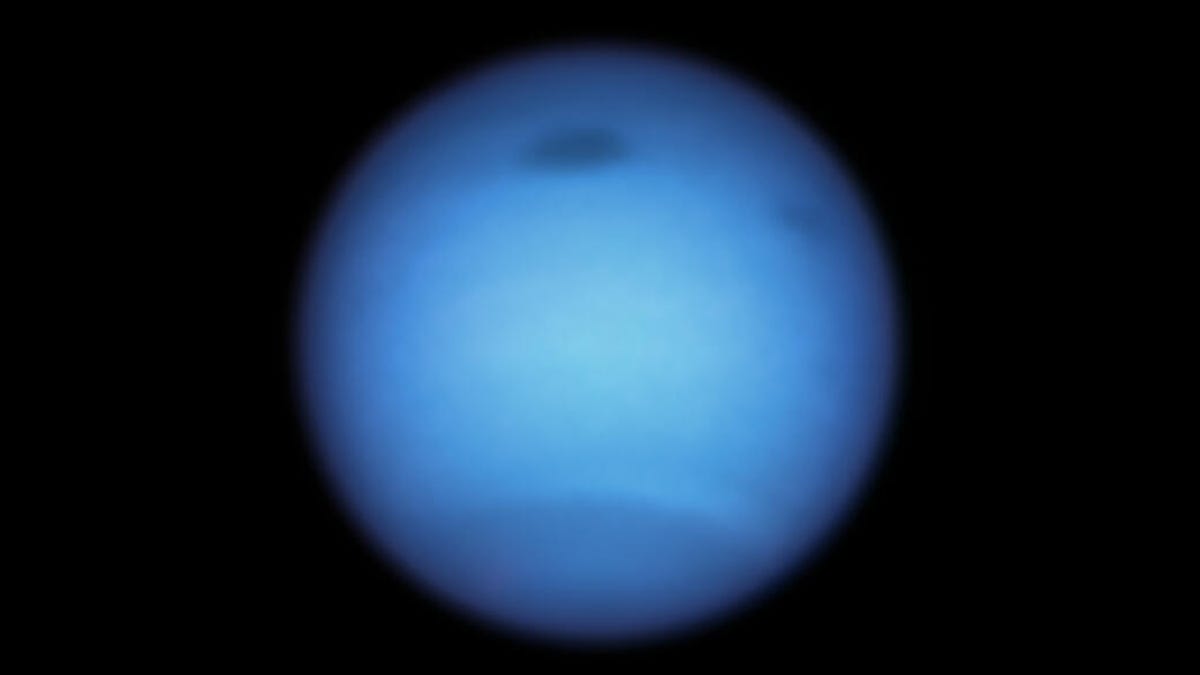NASA Hubble telescope tracks dark storms on Neptune behaving oddly
NASA calls the storm behavior "surprising."
We marvel at Mars, puzzle over gases on Venus and stare deeply into Jupiter. NASA and the Hubble Space Telescope are here to remind us there are amazing and mysterious things happening on Neptune, an ice giant with an atmosphere of hydrogen, helium and methane.
Scientists have been using Hubble to track a dark storm on Neptune since 2018, and the vortex is behaving oddly. Storms like this normally form, drift toward the planet's equator and then dissipate. Not this one. It moved like normal and then took a turn and headed back north in August 2020.
Computer simulations have backed up previous observations of Neptune storm migration patterns, ending in what NASA describes as the equatorial "kill zone." "It was really exciting to see this one act like it's supposed to act and then all of a sudden it just stops and swings back," said planetary scientist Michael Wong Wong in a NASA statement on Tuesday. "That was surprising."
The dark spot wasn't alone. Scientists saw a smaller spot appear at the same time the big storm changed course. The new one may be a piece of the original vortex. The researchers nicknamed the possible fragment "dark spot jr."
The bigger of the storms measures in at 4,600 miles (7,400 kilometers) across while the smaller one is about 3,900 miles (6,300 kilometers). "But we can't prove the two are related. It remains a complete mystery," Wong said.
Plenty of questions surround Neptune's storms. Are the vortexes connect? Why did the bigger storm change path? What will become of it? Hubble's ability to observe Neptune, the farthest known planet in our solar system, might give scientists some answers on these enigmatic storms. Hubble is jointly run by NASA and the European Space Agency.
"We wouldn't know anything about these latest dark spots if it wasn't for Hubble," said Amy Simon, project lead for NASA's Outer Planet Atmospheres Legacy Hubble program. "We can now follow the large storm for years and watch its complete lifecycle."


